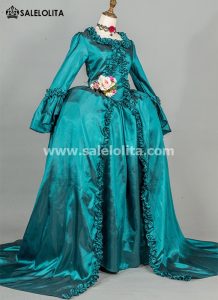The emergence of Renaissance style marked a profound cultural rebirth after the stagnant waters of the Middle Ages. This period, renowned for its surge in intellectual and artistic innovation, paved the way for new aesthetics that permeated not just art and architecture, but also fashion. Understanding how the Renaissance style came about necessitates diving into a rich historical tapestry of social change, artistic revolution, and the interplay with fashion elements such as "princess dresses for adults."
The dawn of the Renaissance era, predominantly from the 14th to the 17th century, witnessed a renewal of learning and a newfound admiration for the classical antiquity's art and wisdom. This revival was significantly spurred by the affluent urban societies of Italy, most notably Florence, where merchants and bankers became notable patrons of the arts. Their financial backing supported an array of artists and thinkers, thereby setting the stage for an aesthetic upheaval.
Art and fashion were deeply interconnected during the Renaissance, each sphere influencing the other. The period's clothing style, especially the voluminous and ornate dresses, mirrored the era's art, characterized by its detail, emotion, and grandeur. Clothing began to transform with increasingly elaborate fabrics and intricate detailing, emphasizing the body's natural shape. Among these were the elaborately designed princess dresses for adults, garments that not only indicated one's social stature but also mirrored the period's artistic values. The princess dresses for adults, often characterized by their tight bodices and full skirts, perhaps best exemplify the era's approach to fashion — a means not just to clothe the body, but to signify one's place in the social hierarchy, to express individual taste, and to embody the artistic sensibilities of the time.

Furthermore, the invention of the printing press was a pivotal moment for fashion in the Renaissance. With the mass production of books, knowledge about different cultures’ clothing and styles proliferated, leading to a blend of fashions. People became aware of trends and started to desire clothing that was indicative of status and fashion-consciousness, further propelling the evolution of style during this period.
Renaissance fashion also played a role in the daily lives of the people. Beyond the wealthy who could afford luxurious fabrics and designs, fashion trends like the slashing technique, where a top layer of fabric was cut to reveal another layer underneath, became popular among commoners. This method allowed for adornment without the need for expensive materials, demonstrating that Renaissance style was not solely about luxury but also about creativity and expression for all societal classes.
In retrospect, the Renaissance style didn't emerge in isolation. It was the product of a confluence of societal changes, technological advancements, and artistic expression. This era's fashion, including the iconic princess dresses for adults, illustrates the time's broader cultural movements, reflecting the period's innovative spirit and the enduring human desire to express identity and status through clothing. Understanding this style's genesis helps unravel the complex tapestry of human history, illustrating how our past continues to shape contemporary cultural and artistic norms.
